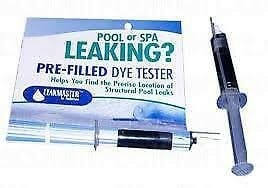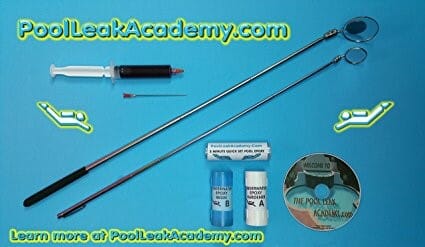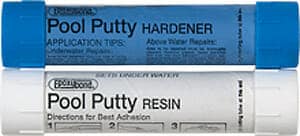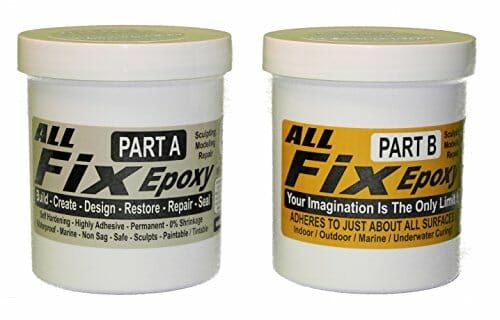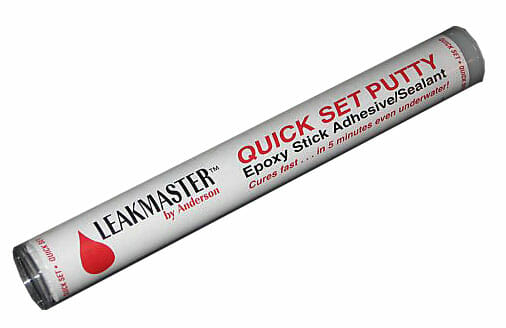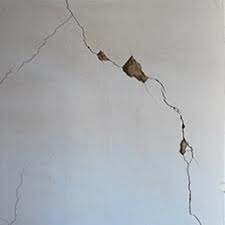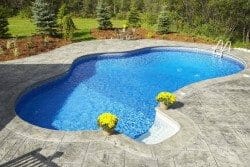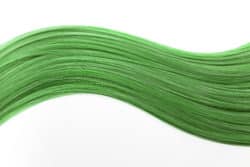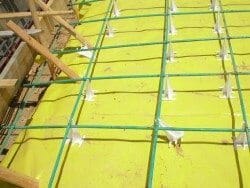How To Check For Pool and Spa Leaks Yourself
Home » Pools and Spas »
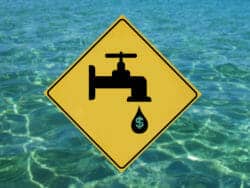
The words that scare pool and spa owners the most, is “There is a leak.” They picture costly repairs and hiring a leak detection company, however, it may be wise to first check several things yourself before considering hiring a leak detection company.
Many pool companies estimate that about 1 in 20 pools leak. Not all pool leaks are in the pool itself, because some of the leaks are from the pools’ equipment or in the piping. Water lose also occurs because of evaporation and water being splashed out from kids and adults diving and playing.
DIY homeowners can do leak testing themselves as well a number of repairs, including, patching or sealing of crack cracks and leaks. To do this there are a number of products that work well, even when a pool is filled with water; thus, saving the cost of emptying the pool and refilling it.
Clues that there may be a leak?
There are a number of clues that a spa or pool may have a leak, however many of them may also be an indication of some other problem and not a pool leak issue.
- Water bill high. Is your water bill higher than normal? Compare it to last year.
- Loss of water. Do you have to add more water than you normally do?
- Disproportionate chemical use and imbalances. Are you needing to add more chemicals than in the past?
- Excessive algae growth. Is there more algae than normal, especially soon after adding chemicals?
- Dirty or discolored water. Does the water appear darker or off color?
- Cracks in the pool body. Are there cracks in the pool body or at the skimmer areas?
- Cracked, loose or damaged tiles. Are there damaged tiles. Especially at the water level line.
- Moisture on retaining wall. If there is a retaining wall on the downhill side of the pool; is there moisture on it?
- Soggy spots in lawn. Are there wet or mushy areas near the pool?
- Loose or cracked coping. Is there loose or damaged coping on the pool perimeter?
- Pool out of level. Is the pool or spa out of level?
Evaporation loses
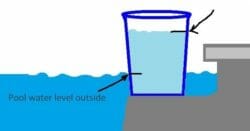
Evaporation plays a major role in swimming pools losing water and the amount of water that a pool looses from evaporation varies greatly. An average pool will lose about ¼ to ½ inch of water a day depending on the wind, temperature and humidity. In order to know if a pool is actually losing water and it’s not because of evaporation, you should conduct a bucket test.
A “Bucket Test” is a simple DIY test that can easily be done by a homeowner with out spending money. It will tell you within 24 hours whether there is a leak, or if the water lose from a pool is due to evaporation. Once you have conducted a bucket test you may want to do a “DYE Test.” (Learn how to do a “Bucket Test” yourself)
Pool leak “Dye” test
Homeowners can do their own dye test without having to have months of training or experience. When doing a dye test be sure that the pool equipment is turned off, that there are no swimmers in the pool moving about and there is not a breeze blowing across the pool. You want the water to be as still as possible; with a minimum of turbulence, so that the dye test will be more effective.
Visual inspection
Prior to conducting a dye test, you want to look for suspect areas where the pool or spa may be leaking. Naturally the easiest ones to spot are cracks in the pools’ plaster. Other areas where leaks are common include around the skimmers and jet areas, the drain areas and at the lights. With in-ground concrete pools you may wish to start your investigation at the tile line and work down. Check the skimmer for cracks and the point where the skimmer bonds to the pool wall surrounding the skimmer.
Have a telescoping inspection mirror, so you can get a better look at a skimmer or jet, if you’re working from an odd angle is handy. Mirrors are handy for both the initial investigation of a leak area and also when patching in difficult to see areas.
Basically, you want the dye to be sucked through the leaking crack
Picking the dye color
There are several different colors that are used in dye kits. The color really is not important, except that want to be able to see it in the water against the pools’ surface color. In example, a yellow or fluorescent yellow dye often works well on a pool with a dark blue surface. Regardless of the color used, they will eventually dissipate in the water.
How The Dye Test Works
Many test kits have a syringe with concentrated dye that allows precise application of the dye in suspected areas without creating unwanted water currents. The colored dye will be sucked or float into a crack or fissure that is causing the leak. The dye identifies the area and the water movement into the fissure.
Sealing the leak once found
Upon discovering where the leak is, you may wish to seal it yourself. How to seal or repair a crack depends on several factors: factors like where is the crack at and how big is the crack. For many cracks, a home owner can do the repairs themselves but there are some that a professional crack repair company may be needed.
Cracks caused by a onetime occurrence or one that rarely happens, like having a pool empty for an extended period of time, a very cold winter, an unusual earthquake tremor or a construction project near by that was shaking the ground, are more likely to remain sealed once repaired, than those due to continual movement of the pool or spa, such as a constantly moving hillside caused by sloop creep.
There are a number of epoxies and sealants that can be applied under water. Epoxy putties are usually a two-part product that feels like soft clay which is applied by hand to underwater cracks.
There are also rubber or silicone-based sealants, some of which can be used above or under water.
Once a crack has been repaired, you may want to do a dye test to verify that it is fixed. Also, you may want to do a “Bucket Test” to check that there are no other leaks in the pool.
Bottom Line
Pool leaks, if not discovered and fix in a timely manner, often get worse and more expansive to repair; therefore, doing a quick inspection of your pool and spa once a year is wise. DIY homeowners or those that wish to save money, can do a dye test to check for leaks and even repair some of them themselves.
Other homeowners, if they suspect a leak, may wish to call a leak detection company and if a leak is discovered, have a professional pool repair company fix the leak. Regardless of the choice, all leaks should be fixed before they become a major problem.
